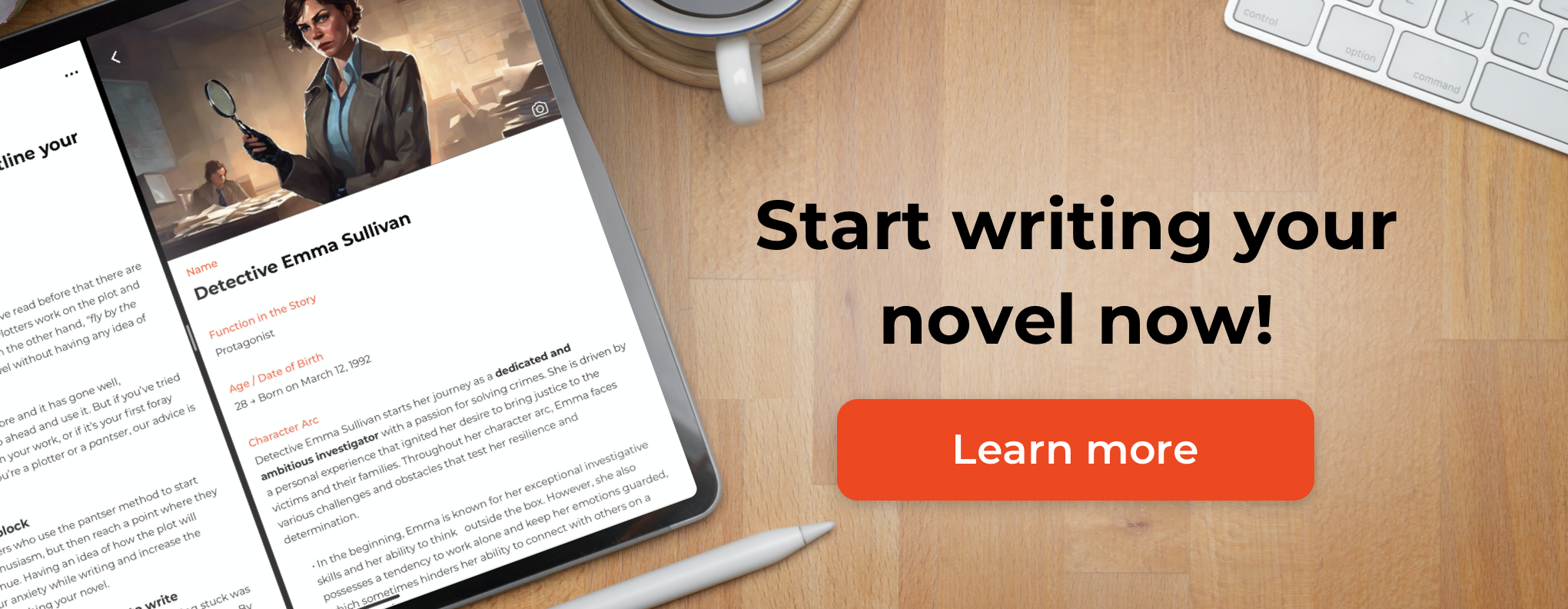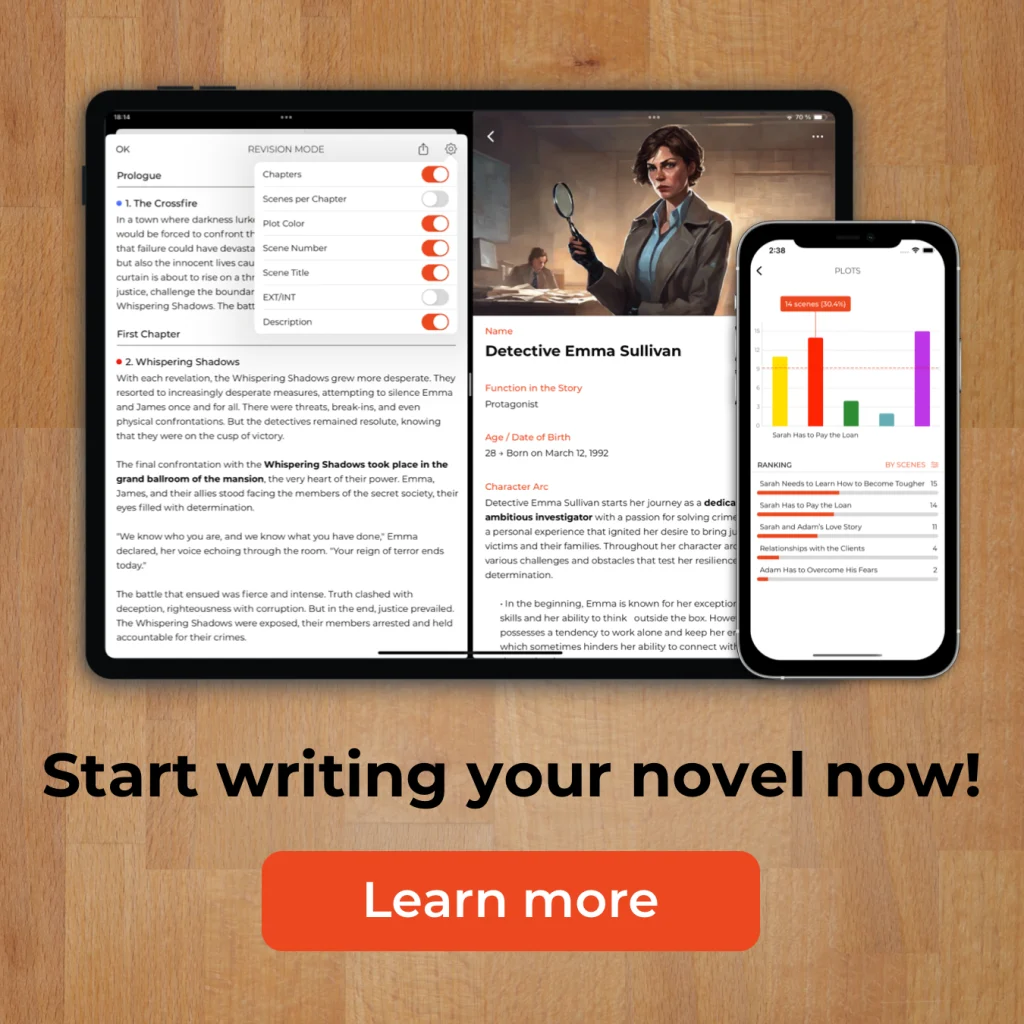In a novel, the narrator is the voice that tells the story. When you write a manuscript, you are always doing it from a specific point of view. That point of view is the narrator, which is the gateway to the fictional universe in which readers will immerse themselves. It is crucial to choose the right point of view, as the narrator can change a story and influence how we perceive it.
There are only six types of narrators in fiction writing, each with its advantages and disadvantages, and each writer may feel more comfortable with one narrator over the others.
You may not like the first-person narrator because you accidentally make the protagonist look too much like you. Or, on the contrary, the first person may be your favorite narrator because it is easier for you to identify with the character. In any case, you should know in depth the different types of narrators, and read examples to determine which one best fits your novel.
Below, I will show you a list of the six existing narrators in literature, along with a brief definition and a link to another post with a more detailed explanation of each one.
🎯 Pro Tip: Some stories may have more than one narrator. Being well-organized and planning your novel in advance can help you create a more compelling narrative voice. A foolproof trick for me is to organize my writing projects with Story Planner. 👈
Types of Narrators
There are six different types of narrators, and we can differentiate them by the narrative persona they use and the information the narrator has about the characters. Let’s see in more detail what I mean and how they work:
1. Third-Person Omniscient Narrator
The omniscient narrator corresponds to a third-person narrator but is unrelated to the cast. The omniscient narrator is not a character who participates in the plot but an omniscient voice who knows and sees everything, including the characters’ thoughts.
This is the most common narrator in classic stories and less used today, perhaps because it has some disadvantages, such as it can turn out to be deceitful if it does not give us all the information, even when an omniscient narrator should know it.
Some well-known examples of omniscient narrators are found in “Pride and Prejudice” by Jane Austen, “Dune” by Frank Herbert, and “Lord of the Flies” by William Golding.
2. Third-Person Limited Narrator
The third-person limited narrator is a type of third-person narrator with a subjective view of the story. This narrator presents the story through the perspective of one character, allowing readers to know only the emotions and thoughts of that character. It is similar to a slightly tricky first-person narrator.
This point of view can be modified throughout a novel, with the narrative switching between characters from one chapter to another, as seen in the “Game of Thrones” novels by George R.R. Martin or in the science fiction saga “The Expanse” by James A. Corey.
The novel may also have a point of view focused on a single character, as in Bradbury’s “Fahrenheit 451”, where the narrator tells the story in the third person but from the viewpoint of the protagonist, Guy Montag.


3. Third-Person Objective Narrator
The third-person objective narrator simply tells the facts as they are seen or heard, as if through a video camera. It does not delve into the characters’ emotions or thoughts because it does not know them, providing an aseptic and neutral viewpoint.
This kind of narrator is typical in journalistic texts, but it can also be found in some novels or short stories, such as Ernest Hemingway’s “Hills Like White Elephants,” Anton Chekhov’s “The Lady with the Dog,” and Cormac McCarthy’s “No Country for Old Men.”
To learn more about all the third-person narrators and read some excerpts of the examples, you can visit the link below. 👇
4. First-Person Protagonist Narrator
One of the most used narrators today is the first-person protagonist narrator. In this narrative style, the story is told from the perspective of the character who leads the story. The protagonist speaks about themselves, and they can do so in either the past or present tense.
This narrative approach allows readers to empathize more quickly with the main character of the story. It can be found in novels such as Paul Auster’s “Moon Palace,” Harper Lee’s “To Kill a Mockingbird,” and Haruki Murakami’s “Killing Commendatore.”
5. First-Person Witness Narrator
The first-person witness narrator also represents a character, but they are not the protagonists in the plot. They may not even be involved in the plot at all. They are simply witnesses who tell us what they know or saw.
The witness narrator may be more or less close to the action, witness it with some involvement, spy on it from afar, or not even have experienced it in their time. There are no limits to how a witness narrator can speak to us, except that they are characters who tell us the plot without being the lead characters and by making few allusions to themself.
This is the type of narrator in Umberto Eco’s “The Name of the Rose,” Jorge Luis Borges’ “Dr. Brodie’s Report,” and Arthur Conan Doyle’s “The Adventures of Sherlock Holmes.”
To learn more about the first-person narrators and read some excerpts of the examples, you can visit the link below. 👇
6. Second-Person Narrator
The second-person narrator speaks directly to the reader, telling the story as if the reader were the protagonist. This is the least common and most difficult narrator to use. Not many writers dare to use a second-person narrator, and it is not widely accepted by readers.
It can be found, for example, in the novels “If on a Winter’s Night a Traveler” by Italo Calvino and “Winter Journal” by Paul Auster.
Switching Narrators in a Novel
Although many novels are limited to a single type of narrator and a single point of view for the entire book, we can also find cases in which the author decides to vary the point of view and even the type of narrator.
The most common thing is to find the following combinations:
- Novels with a third-person limited narrator that change the point of view of the character on which the narrator focuses. It can be between two or more characters, and the POV changes are made when moving from one chapter to another, as in the previously mentioned sagas “Game of Thrones” and “The Expanse.”
- Novels that alternate third-person limited narrators for one or more characters with a first-person protagonist narrator for a single character, such as “The Swimmer” by Joakim Zander.
Of course, there are many other valid combinations, and you are the only one who should set the limit to finding which narrators work best for each of your stories. However, there are a series of rules to keep in mind:
Stick to the Chosen Narrator
If you choose a limited point of view for an entire novel, a chapter, or a scene, try to be consistent. You can not suddenly show another character’s thoughts, as if they were an omniscient narrator, and then return to the limited narrator just because it suits your narration. You have to maintain coherence with the chosen narrator.
Evidence When You Switch Narrators
If you use several narrators, try switching between them at specific times, such as a chapter or scene change. Some authors even put the character’s name in the chapter so that the reader understands from the first word which POV they will find.
You do not have to use this trick, but try to evidence the POV or narrator changes in some way so that the reader understands who is speaking to them. If you do not do it, it can be confusing and exhausting for the reader.
🎯 Pro Tip: Learn From the BestThere is a story by Cortazar titled “Nurse Cora,” which I always recommend reading because the writer handles the narrators with amazing mastery, changing POV within the same sentence. You can find “Nurse Cora” in the book of short stories “All Fires the Fire.”
Conclusion
There are different types of narrators, but choosing the right one for your novel is easier than you might think. Knowing all the advantages and disadvantages of each of the narrators, just choose the one you feel most comfortable with. If necessary, do some tests beforehand and try writing a scene of your novel from different points of view. Which one was the most straightforward and natural for you to write from? That should be your narrator!
